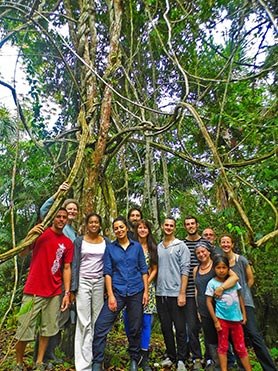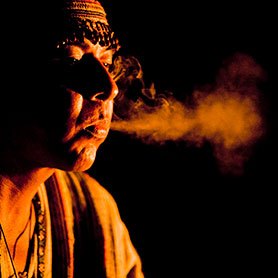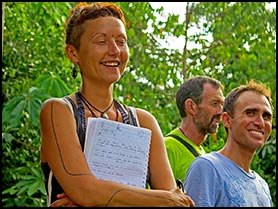
Ayahuasca and Plant Medicine Treatment
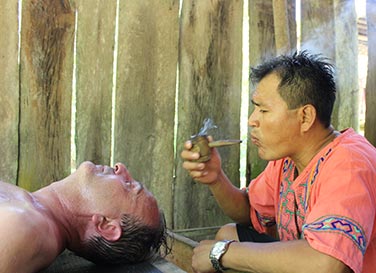
What does it mean to receive treatment?
Outlined below are seven components to receiving treatment in the Amazonian healing tradition of curanderismo. Ayahuasca ceremonies are just one of these components. Depending on the illness, the other six components are often more important than the use of ayahuasca. These seven parts work together to heal patients of their illnesses and bring about health on all levels: physical, mental, emotional, and spiritual. Only when a person has achieved balance and harmony on these levels can he/she truly be considered healed.
There are other components within the treatment process, like inhalants, poultices, perfumes, pomades, massage, and smoke baths, among others, but the seven practices outlined below are considered to be the major components of the plant medicine treatment process when being treated by a curandero in the indigenous tradition. Obviously, there are many differences in methods and styles between indigenous groups, familial traditions, and individual curanderos, so what we present is based on our own particular treatment process in a Shipibo tradition.
The Seven Major Components of Treatment with Ayahuasca
- DIET
The first component is the diet. It is very surprising that western medicine has not yet realized the importance of diet in treatment, with hospital food still being on par with airplane food. Often times, people’s diets are the reason for their illnesses; therefore, making dietary changes is necessary to restore their health. The diet one follows during treatment may have specific prohibitions according to the illness, but every diet shares the same basic rules: no salt, no sugar, no oil, no hot spices, no caffeine, no alcohol, no chemicals, and no sex; basically, no stimulation. When a bland diet is followed, the body does not react to stimulation and can therefore retrain itself to a harmonious baseline. Having the digestive system working properly is the foundation of health and aids the other components as well. Typically the diet is followed during the entire treatment and possibly afterward as well. Obviously, permanent changes may need to be made to one’s diet if it had been contributing to poor health.
- PURGATIVES
Another important component is the purgative. While ayahuasca is also a purgative, it is not as strong as other plant preparations. Some well known purgatives are oje, huacapurana, pinon blanco, mapacho, and sangre de grado. The patient takes the purgative early in the morning on an empty stomach. The usual effects are vomiting and diarrhea, as the body is cleansed on the inside and the blood is purified. This part of the treatment can sometimes be the most important part in the case of illnesses carried in the blood, but regardless of the condition, a purgative is always helpful in cleaning the physical body, and also enhances the ayahuasca experience. Patients typically take a purgative at least once during treatment.
- VAPOR BATHS
The next component is the vapor bath. This is a very important aspect of healing that would greatly help western medicine. The vapor bath uses water boiled with medicinal plants to create a medicinal steam that the patient stands or sits in like a sauna. By opening up the pores many toxins are removed and the medicinal qualities of the steam are absorbed into the body, cleansing the system from the outside in. When a patient has been cleansed, the body has a much easier time returning to its normal, healthy state. Usually a patient will start treatment with a vapor bath each day for several days, although in some treatments, vapor baths can be used more frequently or at specific times in the process. For some illnesses, the vapor bath is the most important part of the treatment, and may be used several times a day or for a longer duration.
- PLANT BATHS
The next component is the plant bath. Patients bathe in water that has had certain plants soaking in it. The patients then refrain from bathing as they normally would in order to let the plants soak into their systems through their skin. This is a further cleanse of the system that also has aroma therapeutic effects. Plant baths help a patient open the mind and cleanse his/her spirit. They are very effective in enhancing the ayahuasca experience in ceremonies. Patients often do plant baths each day for consecutive days during the treatment and may do additional baths if necessary. Plant baths can be done outside of any particular treatment as well, and even form a part of mainstream culture in Peru, where people often do flower baths on New Year’s Eve to cleanse the energy of the past year.
- AYAHUASCA CEREMONIES
Of course, ayahuasca ceremonies play an important component in the healing process. They are important for many reasons. Probably the most important reason is that they provide the curandero the capacity to see inside the patient to understand and properly diagnose the affliction(s). Much like an MRI or an x-ray, ayahuasca is a powerful diagnostic tool. In addition to diagnosing the illness, the curandero also uses an intimate connection to the spirits of the plants to determine the most effective remedy for the patient. For the patients, their experiences during ayahuasca ceremonies can be very helpful in determining the roots of their illnesses, which may be traumas from their past or times of emotional or spiritual weakness when they lacked self love. By understanding these roots, the patients can become active participants in their own healing by releasing pent up emotions, realizing their true beauty and specialness, and returning to a state of self love where they deserve to be. By experiencing their true selves, their spirits, patients remember their divinity and can once again fill their hearts with divine love. Love is the active ingredient of healing. Patients may attend ceremonies throughout the treatment, or at least once in the beginning and once at the end of treatment. The curandero will often use the ceremonies to measure the progress of the patient during treatment, as well.
- PLANT REMEDIES
The most familiar component is likely the plant remedy, the medicine. A preparation made from a single medicinal plant or group of plants is taken by the patient for the duration of the treatment. Often the quantity of the remedy is a measure of the length of treatment. For example, the treatment will last until the patient has finished the bottle(s) of medicine. While the vapor and plant baths cleanse the body of toxins, thus helping to weaken the illness, and the purgatives remove many more toxins, further weakening the illness, and the ayahuasca strengthen the mind and spirit, it is the plant remedies that heal the affliction once and for all. It is common that when patients have been healed they say that it was the particular plant remedy that healed them. Most plant remedies are ingested, but others are applied topically.
- FAITH
The last component was touched upon during the description of the role of ayahuasca, but it deserves its own attention, and that is the connection to God. Essentially, all of the healing components in curanderismo treatment increase and strengthen the patients’ connection to God. Cleanliness is next to Godliness. God is what ultimately heals all afflictions, for the plants are made of God. It may be important to mention that the term God is not used here to refer to a particular religious view but rather to the all pervading collective consciousness of the universe, of which we are all a part. Unfortunately, we sometimes forget this and lose our connection. Treatment is the process of remembering and getting the connection back, which requires work on the part of the patient as well as the curandero. Both must have faith in the healing, and prayers play an essential role in demonstrating, maintaining, and utilizing that faith. The curandero says prayers over the baths, over the remedies, during the ceremonies, and throughout the treatment process, asking that God heal the patient. The curandero also demonstrates their faith by fasting during the preparation of all the components, making a sacrifice for the benefit of the patient. It is also essential for the patients to make a sacrifice, which is done through the diet, and to know in their hearts that God will heal their afflictions. When we know that we will be healed, then we will be healed.
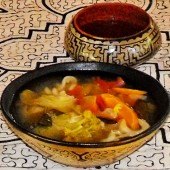 The first component is the diet. It is very surprising that western medicine has not yet realized the importance of diet in treatment, with hospital food still being on par with airplane food. Often times, people’s diets are the reason for their illnesses; therefore, making dietary changes is necessary to restore their health. The diet one follows during treatment may have specific prohibitions according to the illness, but every diet shares the same basic rules: no salt, no sugar, no oil, no hot spices, no caffeine, no alcohol, no chemicals, and no sex; basically, no stimulation. When a bland diet is followed, the body does not react to stimulation and can therefore retrain itself to a harmonious baseline. Having the digestive system working properly is the foundation of health and aids the other components as well. Typically the diet is followed during the entire treatment and possibly afterward as well. Obviously, permanent changes may need to be made to one’s diet if it had been contributing to poor health.
The first component is the diet. It is very surprising that western medicine has not yet realized the importance of diet in treatment, with hospital food still being on par with airplane food. Often times, people’s diets are the reason for their illnesses; therefore, making dietary changes is necessary to restore their health. The diet one follows during treatment may have specific prohibitions according to the illness, but every diet shares the same basic rules: no salt, no sugar, no oil, no hot spices, no caffeine, no alcohol, no chemicals, and no sex; basically, no stimulation. When a bland diet is followed, the body does not react to stimulation and can therefore retrain itself to a harmonious baseline. Having the digestive system working properly is the foundation of health and aids the other components as well. Typically the diet is followed during the entire treatment and possibly afterward as well. Obviously, permanent changes may need to be made to one’s diet if it had been contributing to poor health.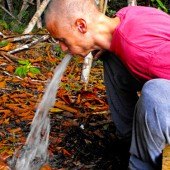 Another important component is the purgative. While ayahuasca is also a purgative, it is not as strong as other plant preparations. Some well known purgatives are oje, huacapurana, pinon blanco, mapacho, and sangre de grado. The patient takes the purgative early in the morning on an empty stomach. The usual effects are vomiting and diarrhea, as the body is cleansed on the inside and the blood is purified. This part of the treatment can sometimes be the most important part in the case of illnesses carried in the blood, but regardless of the condition, a purgative is always helpful in cleaning the physical body, and also enhances the ayahuasca experience. Patients typically take a purgative at least once during treatment.
Another important component is the purgative. While ayahuasca is also a purgative, it is not as strong as other plant preparations. Some well known purgatives are oje, huacapurana, pinon blanco, mapacho, and sangre de grado. The patient takes the purgative early in the morning on an empty stomach. The usual effects are vomiting and diarrhea, as the body is cleansed on the inside and the blood is purified. This part of the treatment can sometimes be the most important part in the case of illnesses carried in the blood, but regardless of the condition, a purgative is always helpful in cleaning the physical body, and also enhances the ayahuasca experience. Patients typically take a purgative at least once during treatment.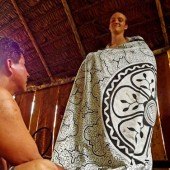 The next component is the vapor bath. This is a very important aspect of healing that would greatly help western medicine. The vapor bath uses water boiled with medicinal plants to create a medicinal steam that the patient stands or sits in like a sauna. By opening up the pores many toxins are removed and the medicinal qualities of the steam are absorbed into the body, cleansing the system from the outside in. When a patient has been cleansed, the body has a much easier time returning to its normal, healthy state. Usually a patient will start treatment with a vapor bath each day for several days, although in some treatments, vapor baths can be used more frequently or at specific times in the process. For some illnesses, the vapor bath is the most important part of the treatment, and may be used several times a day or for a longer duration.
The next component is the vapor bath. This is a very important aspect of healing that would greatly help western medicine. The vapor bath uses water boiled with medicinal plants to create a medicinal steam that the patient stands or sits in like a sauna. By opening up the pores many toxins are removed and the medicinal qualities of the steam are absorbed into the body, cleansing the system from the outside in. When a patient has been cleansed, the body has a much easier time returning to its normal, healthy state. Usually a patient will start treatment with a vapor bath each day for several days, although in some treatments, vapor baths can be used more frequently or at specific times in the process. For some illnesses, the vapor bath is the most important part of the treatment, and may be used several times a day or for a longer duration.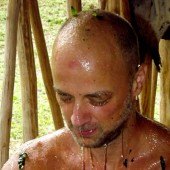 The next component is the plant bath. Patients bathe in water that has had certain plants soaking in it. The patients then refrain from bathing as they normally would in order to let the plants soak into their systems through their skin. This is a further cleanse of the system that also has aroma therapeutic effects. Plant baths help a patient open the mind and cleanse his/her spirit. They are very effective in enhancing the ayahuasca experience in ceremonies. Patients often do plant baths each day for consecutive days during the treatment and may do additional baths if necessary. Plant baths can be done outside of any particular treatment as well, and even form a part of mainstream culture in Peru, where people often do flower baths on New Year’s Eve to cleanse the energy of the past year.
The next component is the plant bath. Patients bathe in water that has had certain plants soaking in it. The patients then refrain from bathing as they normally would in order to let the plants soak into their systems through their skin. This is a further cleanse of the system that also has aroma therapeutic effects. Plant baths help a patient open the mind and cleanse his/her spirit. They are very effective in enhancing the ayahuasca experience in ceremonies. Patients often do plant baths each day for consecutive days during the treatment and may do additional baths if necessary. Plant baths can be done outside of any particular treatment as well, and even form a part of mainstream culture in Peru, where people often do flower baths on New Year’s Eve to cleanse the energy of the past year.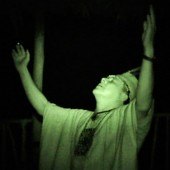 Of course, ayahuasca ceremonies play an important component in the healing process. They are important for many reasons. Probably the most important reason is that they provide the curandero the capacity to see inside the patient to understand and properly diagnose the affliction(s). Much like an MRI or an x-ray, ayahuasca is a powerful diagnostic tool. In addition to diagnosing the illness, the curandero also uses an intimate connection to the spirits of the plants to determine the most effective remedy for the patient. For the patients, their experiences during ayahuasca ceremonies can be very helpful in determining the roots of their illnesses, which may be traumas from their past or times of emotional or spiritual weakness when they lacked self love. By understanding these roots, the patients can become active participants in their own healing by releasing pent up emotions, realizing their true beauty and specialness, and returning to a state of self love where they deserve to be. By experiencing their true selves, their spirits, patients remember their divinity and can once again fill their hearts with divine love. Love is the active ingredient of healing. Patients may attend ceremonies throughout the treatment, or at least once in the beginning and once at the end of treatment. The curandero will often use the ceremonies to measure the progress of the patient during treatment, as well.
Of course, ayahuasca ceremonies play an important component in the healing process. They are important for many reasons. Probably the most important reason is that they provide the curandero the capacity to see inside the patient to understand and properly diagnose the affliction(s). Much like an MRI or an x-ray, ayahuasca is a powerful diagnostic tool. In addition to diagnosing the illness, the curandero also uses an intimate connection to the spirits of the plants to determine the most effective remedy for the patient. For the patients, their experiences during ayahuasca ceremonies can be very helpful in determining the roots of their illnesses, which may be traumas from their past or times of emotional or spiritual weakness when they lacked self love. By understanding these roots, the patients can become active participants in their own healing by releasing pent up emotions, realizing their true beauty and specialness, and returning to a state of self love where they deserve to be. By experiencing their true selves, their spirits, patients remember their divinity and can once again fill their hearts with divine love. Love is the active ingredient of healing. Patients may attend ceremonies throughout the treatment, or at least once in the beginning and once at the end of treatment. The curandero will often use the ceremonies to measure the progress of the patient during treatment, as well.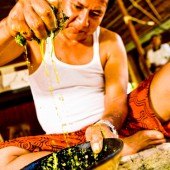 The most familiar component is likely the plant remedy, the medicine. A preparation made from a single medicinal plant or group of plants is taken by the patient for the duration of the treatment. Often the quantity of the remedy is a measure of the length of treatment. For example, the treatment will last until the patient has finished the bottle(s) of medicine. While the vapor and plant baths cleanse the body of toxins, thus helping to weaken the illness, and the purgatives remove many more toxins, further weakening the illness, and the ayahuasca strengthen the mind and spirit, it is the plant remedies that heal the affliction once and for all. It is common that when patients have been healed they say that it was the particular plant remedy that healed them. Most plant remedies are ingested, but others are applied topically.
The most familiar component is likely the plant remedy, the medicine. A preparation made from a single medicinal plant or group of plants is taken by the patient for the duration of the treatment. Often the quantity of the remedy is a measure of the length of treatment. For example, the treatment will last until the patient has finished the bottle(s) of medicine. While the vapor and plant baths cleanse the body of toxins, thus helping to weaken the illness, and the purgatives remove many more toxins, further weakening the illness, and the ayahuasca strengthen the mind and spirit, it is the plant remedies that heal the affliction once and for all. It is common that when patients have been healed they say that it was the particular plant remedy that healed them. Most plant remedies are ingested, but others are applied topically.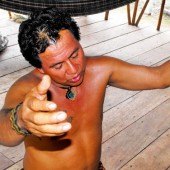 The last component was touched upon during the description of the role of ayahuasca, but it deserves its own attention, and that is the connection to God. Essentially, all of the healing components in curanderismo treatment increase and strengthen the patients’ connection to God. Cleanliness is next to Godliness. God is what ultimately heals all afflictions, for the plants are made of God. It may be important to mention that the term God is not used here to refer to a particular religious view but rather to the all pervading collective consciousness of the universe, of which we are all a part. Unfortunately, we sometimes forget this and lose our connection. Treatment is the process of remembering and getting the connection back, which requires work on the part of the patient as well as the curandero. Both must have faith in the healing, and prayers play an essential role in demonstrating, maintaining, and utilizing that faith. The curandero says prayers over the baths, over the remedies, during the ceremonies, and throughout the treatment process, asking that God heal the patient. The curandero also demonstrates their faith by fasting during the preparation of all the components, making a sacrifice for the benefit of the patient. It is also essential for the patients to make a sacrifice, which is done through the diet, and to know in their hearts that God will heal their afflictions. When we know that we will be healed, then we will be healed.
The last component was touched upon during the description of the role of ayahuasca, but it deserves its own attention, and that is the connection to God. Essentially, all of the healing components in curanderismo treatment increase and strengthen the patients’ connection to God. Cleanliness is next to Godliness. God is what ultimately heals all afflictions, for the plants are made of God. It may be important to mention that the term God is not used here to refer to a particular religious view but rather to the all pervading collective consciousness of the universe, of which we are all a part. Unfortunately, we sometimes forget this and lose our connection. Treatment is the process of remembering and getting the connection back, which requires work on the part of the patient as well as the curandero. Both must have faith in the healing, and prayers play an essential role in demonstrating, maintaining, and utilizing that faith. The curandero says prayers over the baths, over the remedies, during the ceremonies, and throughout the treatment process, asking that God heal the patient. The curandero also demonstrates their faith by fasting during the preparation of all the components, making a sacrifice for the benefit of the patient. It is also essential for the patients to make a sacrifice, which is done through the diet, and to know in their hearts that God will heal their afflictions. When we know that we will be healed, then we will be healed.